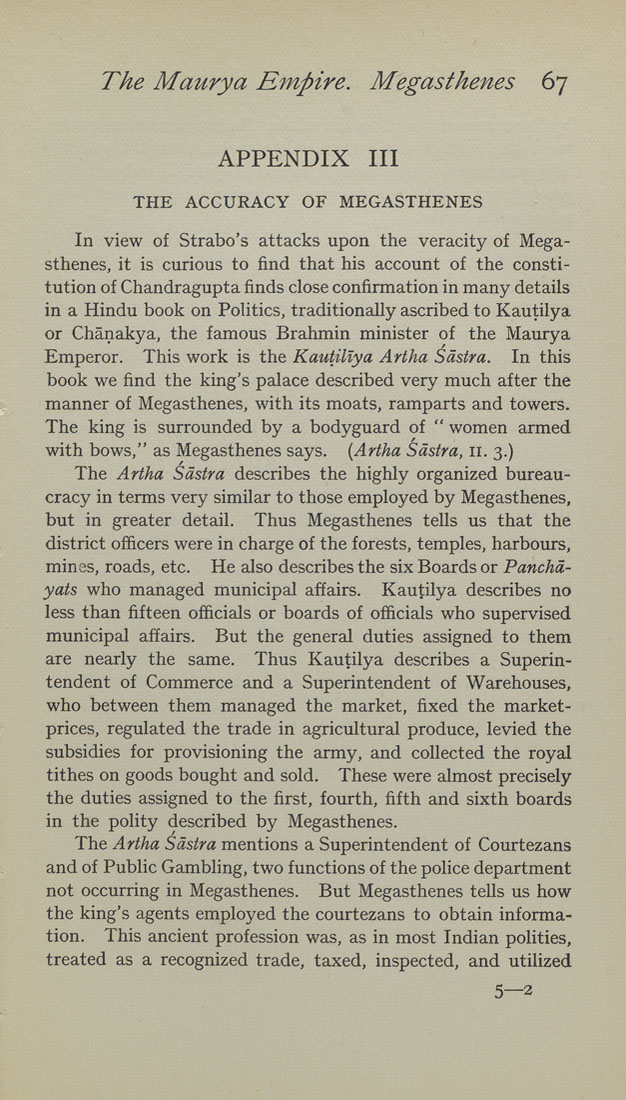The Maurya Empire. Megasthenes 67
APPENDIX III
THE ACCURACY OF MEGASTHENES
In view of Strabo's attacks upon the veracity of Mega¬
sthenes, it is curious to find that his account of the consti¬
tution of Chandragupta finds close confirmation in many details
in a Hindu book on Politics, traditionally ascribed to Kautilya
or Chanakya, the famous Brahmin minister of the Maurya
Emperor. This work is the Kautillya Artha Sdstra. In this
book we find the king's palace described very much after the
manner of Megasthenes, with its moats, ramparts and towers.
The king is surrounded by a bodyguard of " women armed
with bows," as Megasthenes says. {Artha Sdstra, ii. 3.)
The Artha Sdstra describes the highly organized bureau¬
cracy in terms very similar to those employed by Megasthenes,
but in greater detail. Thus Megasthenes tells us that the
district officers were in charge of the forests, temples, harbours,
mines, roads, etc. He also describes the six Boards or Panchd¬
yats who managed municipal affairs. Kautilya describes no
less than fifteen officials or boards of officials who supervised
municipal affairs. But the general duties assigned to them
are nearly the same. Thus Kautilya describes a Superin¬
tendent of Commerce and a Superintendent of Warehouses,
who between them managed the market, fixed the market-
prices, regulated the trade in agricultural produce, levied the
subsidies for provisioning the army, and collected the royal
tithes on goods bought and sold. These were almost precisely
the duties assigned to the first, fourth, fifth and sixth boards
in the polity described by Megasthenes.
The Artha Sdstra mentions a Superintendent of Courtezans
and of Public Gambling, two functions of the police department
not occurring in Megasthenes. But Megasthenes tells us how
the king's agents employed the courteza.ns to obtain informa¬
tion. This ancient profession was, as in most Indian polities,
treated as a recognized trade, taxed, inspected, and utilized
5—2
|








